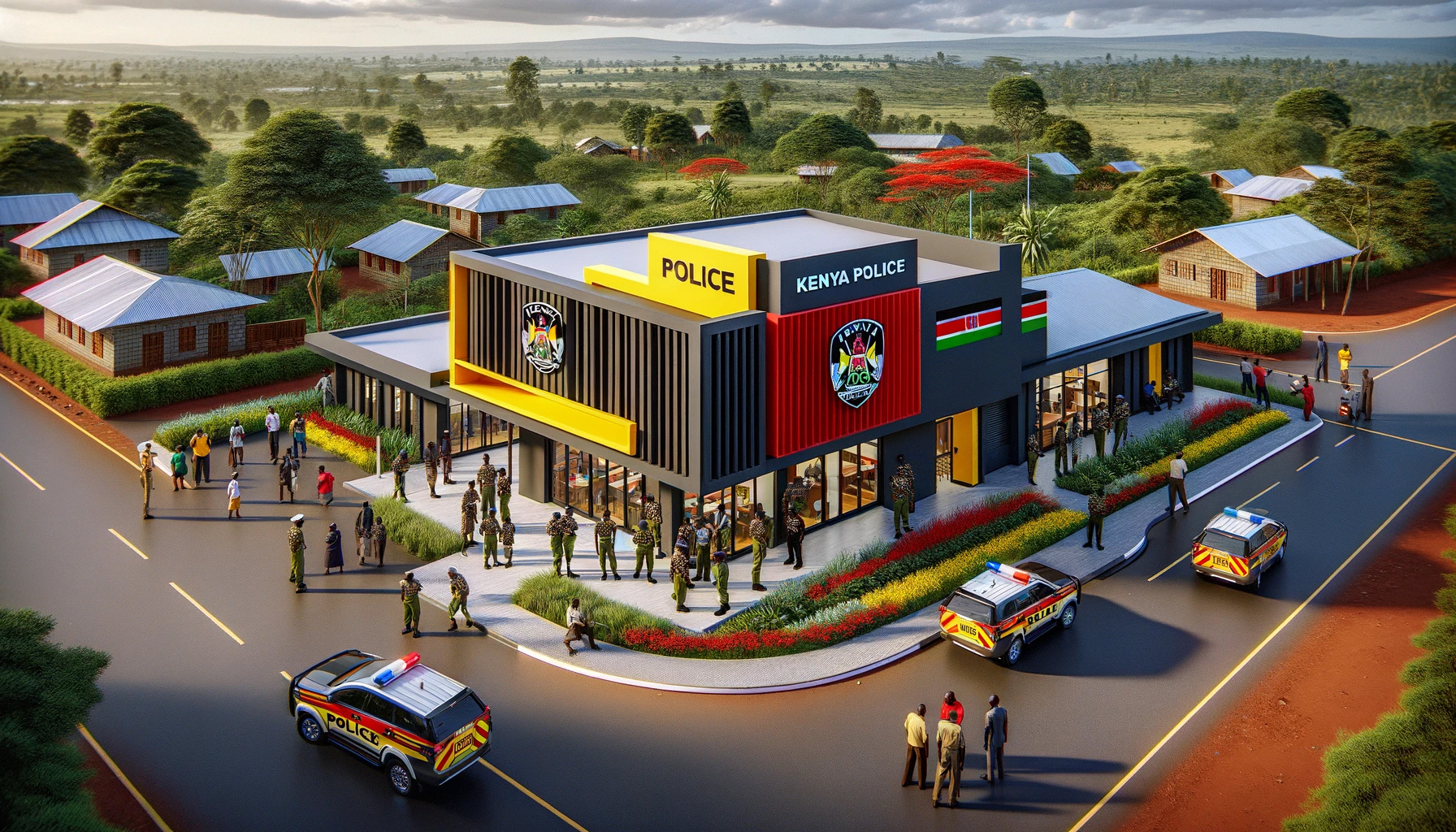The Future of Public Services: Embracing Concessioning for Effective Delivery
#LongRead
Governments face immense pressure to deliver top-notch public services in today’s fast-paced world. Yet, many public facilities—such as healthcare centres and police stations—struggle with underfunding, poor maintenance, and outdated infrastructure. This results in a significant gap between the needs of the populace and the capabilities of public institutions. However, a practical and innovative solution exists: concessioning.
What is Concessioning?
Concessioning is a form of public-private partnership where the government retains ownership of public facilities but outsources their construction, maintenance, and operational efficiency to private companies. These companies, known as concessionaires, are compensated by the government as long as they meet specified standards. This approach bridges the gap between public service needs and delivery capabilities, ensuring that facilities are built to modern specifications and maintained at high standards.




Addressing Public Sector Procurement Inefficiencies
One of the key advantages of concessioning is its potential to tackle the inefficiencies and corruption often associated with public sector procurement. It is widely known that public procurement is frequently overpriced, with a Kshs 10 pen inexplicably costing Kshs 100. Such inflated pricing stems from deeper systemic issues, including corruption, lack of oversight, and inefficient processes. The government can bypass these issues by shifting procurement responsibility to private concessionaires, ensuring public funds are used more effectively and transparently.
Concessionaires, driven by the need to maintain profitability while adhering to contractual standards, are less likely to engage in the financial mismanagement that plagues public sector procurement. They are incentivised to procure goods and services at fair market prices, ensuring cost-effectiveness and value for money. Moreover, with the stringent oversight and transparency requirements in concession agreements, monitoring and auditing expenditures become easier, reducing the scope for corruption and waste.
The Benefits of Concessioning
Consider how concessioning can transform various public sectors. Under a concession agreement, the government ensures facilities are equipped with state-of-the-art technology and built to modern standards. The private concessionaire is responsible for these facilities’ ongoing maintenance and operation, adhering to strict performance metrics. For example:
- Healthcare: A Level 3 health centre, built and maintained by a private concessionaire, ensures that medical equipment is always functional, reducing downtime and improving patient outcomes. The concessionaire faces penalties for any lapses, maintaining a high standard of service. Such models have been successfully implemented in countries like Lesotho, where the Queen ‘Mamohato Memorial Hospital operates under a public-private partnership, significantly improving healthcare delivery and patient satisfaction.
- Education: Schools managed under concession agreements benefit from regular maintenance and modern educational tools, creating an environment conducive to learning. This directly impacts student performance, reducing dropout rates and improving educational outcomes. In the United States, charter schools operating under public-private partnerships have significantly improved student achievement, particularly in underserved communities.
- Security: Police stations built and maintained to global standards ensure officers have the resources to perform their duties effectively. Adequate facilities boost morale and reduce corruption, leading to better public safety. In the UK, the Private Finance Initiative (PFI) has been used to develop and maintain police stations, resulting in modern facilities that support effective law enforcement.


The Power of Micro-Concessions
While public-private partnerships often focus on large-scale projects, micro-concessions have tremendous potential. This model allows smaller investors to participate by investing in single facilities or small infrastructure segments, like a 5km stretch of road. Micro-concessions can save the government money directly by spreading the financial burden across numerous smaller projects rather than a few massive ones.
Smaller investments mean quicker project completion times and more manageable oversight. Community oversight plays a crucial role in ensuring transparency and accountability. Local communities can form oversight committees to monitor the progress and maintenance of the projects. These committees, composed of respected local leaders, residents, and stakeholders, can provide real-time feedback and report any issues directly to the government and concessionaire.
For example, a community overseeing the construction and maintenance of a 5km road can regularly inspect the project, ensuring that the concessionaire adheres to agreed-upon standards. They can use tools like mobile apps to report issues like potholes or delays, enabling swift action. This grassroots involvement boosts local engagement and ensures that the project meets the community’s needs and expectations.
Furthermore, community oversight can enhance transparency by making project details publicly accessible. Posting updates in community centres, local newspapers, and online platforms keeps everyone informed. This openness reduces the risk of corruption and ensures that public funds are used effectively.
Micro-Concessions as an Investment Opportunity
Micro-concessions present a real investment opportunity for small and medium enterprises (SMEs). For SME-level investors, micro-concessions offer a stable and predictable return on investment. Unlike traditional investments subject to market volatility, they provide a steady income stream based on long-term contracts with government entities. This model allows SMEs to invest in tangible projects that directly benefit their communities, such as healthcare centres, schools, or local roads.
The cumulative impact of these smaller investments can be substantial. SMEs investing in micro-concessions can create jobs on a much larger scale than a few large public-private partnerships (PPPs). By spreading investment across numerous small projects, micro-concessions can stimulate local economies, create employment opportunities, and drive sustainable development.
For example, when SMEs invest in building and maintaining a local clinic, they generate jobs for construction workers, healthcare staff, and administrative personnel. This improves local healthcare infrastructure and boosts the local economy through job creation and increased economic activity. Similarly, SMEs investing in local educational facilities ensure that schools are well-maintained and equipped, creating jobs for teachers, maintenance staff, and educational materials suppliers.
Micro-concessions allow SMEs to leverage their local knowledge and expertise to provide tailored solutions that meet specific community needs. This can lead to more efficient and effective service delivery, as SMEs are often more flexible and responsive than larger corporations. The involvement of SMEs in local projects can foster a sense of ownership and accountability within the community, leading to better-maintained facilities and improved service quality.
Embracing Micro-Concessioning in the Digital Space
In my recent blog post on rewilding the digital jungle, I highlighted the urgent need for Africa to reclaim its digital destiny from the grip of global tech giants. Similarly, my discussion of Philip Thigo’s appointment as Kenya’s Special Envoy for Technology underscored the necessity for bold and imaginative strategies to position Africa as a producer rather than just a consumer of digital technology. These themes align seamlessly with micro-concessioning in the digital realm, which can be pivotal in transforming Kenya’s digital ecosystem.
Micro-concessioning in the digital space involves smaller investors contributing to developing digital infrastructure, education, and AI startups. This model provides the necessary resources to scale up technological advancements and ensures broad-based economic benefits by supporting local entrepreneurs and small businesses.
- Digital Infrastructure: Investing in digital infrastructure is crucial for bridging the digital divide. Micro-concessions can fund the establishment of community internet hubs, expanding broadband networks to underserved areas, and the development of data centres. By decentralising these investments, we can ensure that even the most remote areas can access reliable internet, fostering digital inclusion and economic opportunities. This approach resonates with resisting the “pathology of command and control” and embracing principles of rewilding the internet by restoring complexity, diversity, and resilience to our digital ecosystems.
- Education: Investing in digital education is equally important. Micro-concessions can support the development of tech hubs and coding schools, providing youth with the skills needed to thrive in the digital economy. For instance, local entrepreneurs could invest in setting up computer labs in schools or sponsoring digital literacy programmes. This grassroots approach ensures that digital education is tailored to the specific needs of different communities, preparing a future workforce equipped with essential digital skills. My previous blog post noted, “We must harness our youthful population’s potential to create and not just consume technology.”
- AI Startups: The AI sector presents significant opportunities for growth and innovation. Micro-concessionaires can drive advancements in healthcare, agriculture, and financial services by investing in AI startups. These investments foster innovation, create jobs, and build local expertise in cutting-edge technologies. For example, small investors could fund AI projects to improve crop yields through predictive analytics or develop health diagnostic tools that enhance medical services in rural areas.
By engaging smaller investors, micro-concessions in the digital space can significantly boost local economies, create jobs, and ensure that technological advancements benefit all layers of society. This approach also encourages local ownership and accountability, fostering a more inclusive and resilient digital ecosystem. In essence, micro-concessions not only support the development of essential digital infrastructure and services but also allow communities to participate actively in the digital revolution, ensuring that no one is left behind.
Government’s Role in Providing Human Resources
While concessionaires can ensure that facilities are equipped with the latest technology and maintained to high standards, it is ultimately the government’s responsibility to provide the necessary human resources to operate these facilities effectively. For instance, a concessionaire can provide an X-ray machine in a health centre, but the government must employ a radiologist. Similarly, while a concessionaire can build and maintain police stations, the government must ensure that there are well-trained and well-equipped police officers to staff these stations.
The experience of Lesotho’s Queen ‘Mamohato Memorial Hospital (QMMH) under a public-private partnership (PPP) offers valuable insights. According to research dubbed “Learning from the End of the Public-Private Partnership for Lesotho’s National Referral Hospital Network“, the PPP in Lesotho demonstrated significant improvements in healthcare delivery and patient satisfaction due to strong leadership commitment to quality improvement, robust protocols, effective monitoring, and high levels of accountability and discipline. A well-functioning infrastructure, core systems, workflows, and an internal referral network were crucial performance facilitators. However, despite these successes, the partnership faced critical challenges, particularly in human resource management and broader health system limitations. Staffing issues were significant barriers, including shortages of trained personnel and insufficient training for incoming managerial staff. The collapse of the PPP highlighted the government’s need to invest in training and improving staffing to ensure sustainable success.
A concessionaire might provide the infrastructure in the education sector, but the government needs to ensure qualified teachers and sufficient learning materials. This partnership ensures that while the facilities are modern and well-maintained, the services are high-quality and delivered by skilled professionals.
Thus, while concessionaires play a vital role in upgrading and maintaining public facilities, the government must complement these efforts by ensuring that the human resources needed to operate these facilities are adequately trained and available. This dual approach leverages the strengths of both the public and private sectors to deliver superior public services, ultimately enhancing the quality of life for all citizens.
The Price of Inaction
In under-resourced countries, upgrading and maintaining high-quality facilities and infrastructure is an immense challenge. Traditional methods of investment and management have proven inadequate, resulting in persistent deficits across various sectors. The consequences of inaction are dire, perpetuating cycles of poverty and inequality. To break this cycle, we must embrace radically different approaches to investment and development.
The cost of inaction is immense, affecting individual lives and the broader societal framework. Failing to maintain and improve public facilities directly results in poor health outcomes, diminished educational achievements, compromised public safety, and a lack of digital inclusion. These deficiencies hinder economic development and perpetuate inequality, creating a difficult-to-break cycle.
Continuing to do things as we have always done will not change outcomes. We must adopt radically different approaches to investing in and developing high-quality facilities and infrastructure. This means embracing public-private partnerships, concessioning, and other innovative investment models that bring in private sector expertise, efficiency, and accountability. By doing so, we can transform our public services, ensuring sustainable national progress and improving the quality of life for all citizens.
Transparency and The Power of Data
Transparency is the linchpin of a successful concessioning programme. Detailed and publicly accessible contracts, regular audits, and clear performance metrics are essential to maintain public trust and accountability. This level of transparency is non-negotiable and safeguards against corruption and inefficiency. By ensuring that all aspects of the concession agreement are open to public scrutiny, we can foster a culture of accountability and trust, which is vital for the success of such partnerships.
Transparency and accountability are fundamental to the success of any concessioning programme. Detailed, publicly accessible contracts, regular audits, and clear performance metrics are essential for maintaining public trust and ensuring accountability. This level of transparency serves as a safeguard against corruption and inefficiency. Ensuring that all aspects of the concession agreement are open to public scrutiny fosters a culture of accountability and trust, which is vital for the success of such partnerships.
The Global Partnership for Sustainable Development Data (GPSDD) underscores the transformative power of data in driving progress towards sustainable development goals (SDGs). According to GPSDD, investments in strengthening data systems can yield significant returns, with recent research showing an average return of $32 for every $1 invested in data systems in low and middle-income countries. This “data dividend” can revolutionize decision-making, accelerate digital transformation, and drive new economic opportunities, making data a crucial element in enhancing the effectiveness of concessioning efforts.
One of the key initiatives promoted by GPSDD is the integration of citizen data. We can enhance transparency and accountability by engaging local communities in data collection and monitoring. Citizen data involves residents providing real-time feedback on the condition and performance of public facilities. This participatory approach improves oversight and empowers communities to take an active role in the governance and maintenance of their local infrastructure.

Citizen Data
For example, communities could use mobile apps to report issues such as potholes in roads or broken equipment in healthcare facilities. This data can then be aggregated and analyzed to identify patterns and areas needing urgent attention. Making this data publicly accessible allows all stakeholders—including government officials, concessionaires, and citizens—to collaborate effectively to address any shortcomings.
The GPSDD’s High Impact Initiative on the Power of Data aims to launch and support national data partnerships. These partnerships bring together governments, tech companies, civil society, and donors to use data ethically and effectively. By aligning activities behind priority goals and implementing harmonized approaches for funding data systems, these initiatives aim to unlock the potential of data to drive sustainable development and improve public services.
Incorporating citizen data into concessioning efforts also enhances community engagement and responsiveness. This approach ensures that public services are delivered effectively and equitably, reflecting the actual needs and experiences of the people they serve. By leveraging the power of data, particularly citizen data, we can transform how public facilities and services are managed, ensuring they meet the highest standards of quality and accountability.


